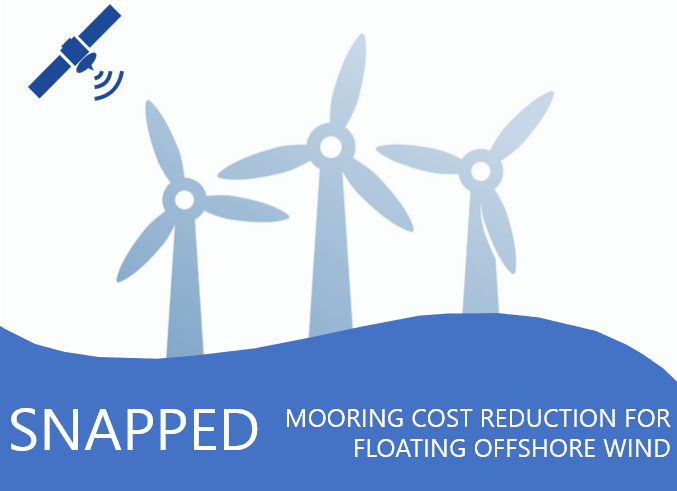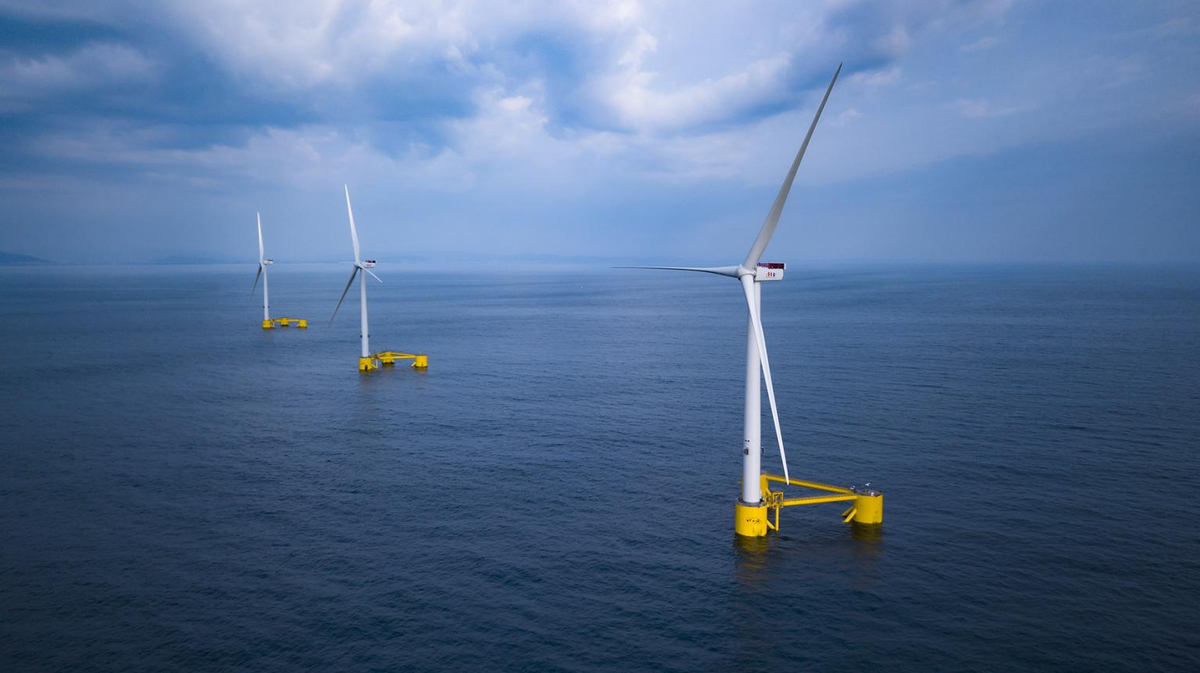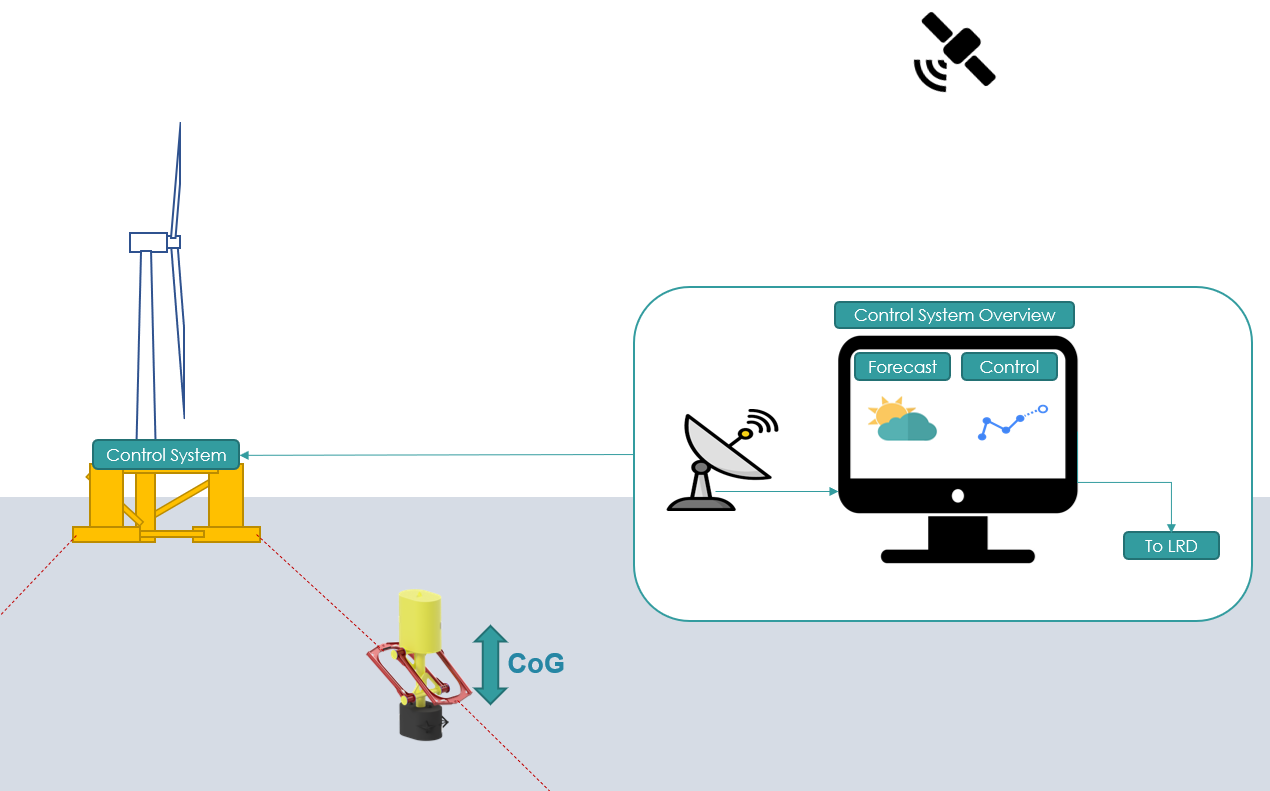
Objectives of the service

Floating Offshore Wind (FLOW) is predicted to reach 30GW of installed capacity globally by 2030 and is on a challenging trajectory to become cost competitive with fixed offshore wind. As a result of the achievable water depths for FLOW, it is expected to be deployed in more aggressive sites than fixed wind. This results in an opportunity to exploit a greater wind resource, and that platforms will be subject to significant differential between extreme and operational ocean conditions.
The Load Reduction Device (LRD) is a FLOW mooring component which reduces both extreme and fatigue loading. The cost implication of passive reduction in mooring load is well understood to reduce the overall system cost. However, through additional predictive adaptive response, the cost savings, durability, and survivability can be increased substantially, contributing to further LCOE reductions. The adaptive LRD functionality is to be used in conjunction with forecast data to inform active changes to LRD response to optimise performance for each predicted seastate.
Users and their needs
FLOW projects are driven by the same factors as all energy generating technologies, namely the Levelised Cost of Energy (LCOE). FLOW is currently expensive compared to fixed bottom wind, and therefore must reduce LCOE in order to compete. The CAPEX of an FLOW project is driven by turbine, platform, mooring, electrical infrastructure and installation costs. Most of these have clear pathways for cost reduction as experience is gained with installed capacity, larger projects share cost across more platforms, production volume and new innovations are introduced (Innoenergy, BVG Associates, 2017).
Mooring cost reduction however is a problem, as cost reduction runs counter to achieving the durability and survivability required of commercial scale marine energy installations.
In other offshore applications and markets, multiple mooring lines are used to keep loads per line to an acceptable level. The cost of additional lines in these applications can be justified as the thrust load is not as significant, and typically only a single high-value platform is being moored i.e. in Oil& Gas installations.
The customer in FLOW therefore needs solutions that deliver increased durability and survivability to meet the requirements of 3rd party certification while simultaneously delivering cost reductions
Service/ system concept
The mooring response stiffness of the LRD is a function of the gearing between the buoyancy, ballast and hinge positions. The mooring response stiffness can be alternately optimised for load reduction in either operational or extreme conditions by varying a number of design parameters including:
- By changing the distance between the buoyancy and ballast modules
- By changing the buoyancy and ballast weight forces such as by pumping ballast
- By changing the position of the axes where the mooring lines connect to the LRD main body
The proposed system will utilise Satellite Earth Observation (SatEO) to provide weather and sea forecast data for the optimisation of the adaptive LRD during the operation of the FLOW system.
The adaptive LRD will result in 30% saving in mooring CAPEX results in approximately 3% saving in overall LCOE, and the potential to safely deploy and operate FLOW system in more aggressive sites, expanding the potentially available site locations.

Space Added Value
The suitability of several space assets is currently being investigated and assessed. These include ocean analysis-forecast models, as well as space-borne scatterometer, synthetic aperture radar(SAR), and altimeter instruments capable of measuring significant wave height, wave period, wave direction, as well as ocean surface wind speed and direction.
The advantages of scatterometer and altimeter datasets include wide spatial coverage, long data archives, and faster revisit times. The data are particularly useful for investigation of long-term wind and wave conditions over a wide area. Both scatterometer and altimeter datasets have grid cells of approximately 25 km. In contrast, synthetic aperture radar (SAR) wind and wave maps can be retrieved at approximately 1km grid resolution. SAR-based remote sensing can be used to obtain wind and wave parameters far offshore and in coastal zones with much finer detail when compared to e.g., meteorological data and mesoscale model results.
Current Status
The project commenced in March 2021. Key ongoing activities to date have included an assessment of space assets suitability, the mechanisms to vary the LRD parameters subsea. Business case modelling and Levelised Cost of Impact Modelling has commenced, and the target is to increase LCOE reduction to greater than 10%.




